What could have induced the late Prince Charles Bonaparte and Dr. Reichenbach to separate this bird generically from the genus Phaëthornis I know not.
Certain it is that nothing could be more fallacious, or better calculated to bring science into contempt. No excuse can, indeed, be offered for their so doing, since I believe that neither of them could have personally examined the bird, but that they proposed their generic titles from the mere descriptions of the species: had they ever seen it, they would have compared it with my P. hispidus, and perhaps questioned if the two species were not one and the same; instead of which they have made hispidus generically distinct, under the name of Ptyonornis,—at least, Dr. Reichenbach has done so. It is such measures as these which give the monographer so much trouble in unravelling the confusion they have made, and impose upon him the unpleasant task of pointing out such gross errors. I should not have spoken thus strongly on the subject had there been the slightest perceptible difference in form between this bird, the P. superciliosus, P. Eurynome, and other species which these authors admit are typical Phaëthorni. For the separation of the smaller members of the genus under the subgeneric title of Pygmornis proposed by Bonaparte, and Eremita by Reichenbach, some excuse may be made, those little birds forming a very natural subdivision, although, as will be seen, I have retained them all under the generic name of Phaëthornis. We now come to more important points with regard to this species—the country it inhabits, and whether it be or be not identical with P. hispidus, a name published six years prior to that of Oseryi.
The native habitat of Osery’s Hermit is that portion of the Andes lying between Bogota and Ecuador. I have specimens from both these countries now lying before me,—one received in an ordinary collection from Santa Fé, and another from Archidona through the kindness of Professor Jameson. I am also indebted to Mr. Lawrence of New York for another example, which was collected by Mr. Moore in Ecuador. Mr. Lawrence, on comparing his specimens with my Plate of P. hispidus, came to the conclusion that they were distinct from that species, and being unaware that the bird had been described in Europe under the name of Oseryi, proposed for it the specific term of villosus. I agree with Mr. Lawrence that there are sufficient grounds for considering it distinct from the P. hispidus, that bird being of a larger size, and having the feathers of the throat of greater length and more distinctly margined with grey, while the lengthened greyish-white throat-mark seen in all my specimens of Oseryi is wanting in hispidus. This latter species also inhabits a different country, being, so far as we yet know, only found in the southern country of Bolivia, where it doubtless represents the Oseryi of more northern latitudes.
M. Bourcier has dedicated this species to the Count d’Osery, the unfortunate “compagnon de voyage ” of the Count de Castelnau.
Head, upper surface and wing-coverts bronzy green, browner on the head; ear-coverts dark brown, bordered above and below with a line of greyish white; upper tail-coverts bronzy green, with a crescentic mark of blackish brown near the end, and tipped with grey; tail very dark green at the base for half its length, and as far as this colour extends the shafts are white, except those of the two central feathers, which are dark; the remainder of the tail is brownish black, the lateral feathers narrowly edged with greyish white on their inner webs near the end, and a broader mark of white on the edge of the outer webs, the projecting ends of the central feathers gradually fading into white; throat and breast ashy brown, intermixed with greyish white, presenting a rough shaggy appearance; there is also a white line running down the centre of the throat to the breast; abdomen greyish white; under tail-coverts ashy brown with grey margins; wings purplish brown; upper mandible and point of the lower mandible black, the basal portion of the latter yellow; irides black; feet yellowish.
The figures are of the size of life. The plant is the Anguloa uniflora.
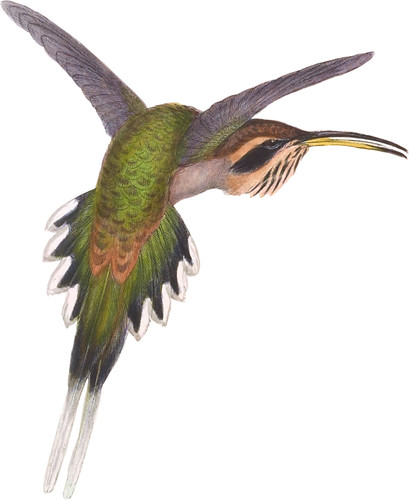 Phœthornis Eurynome
Eurynome Hermit
Phœthornis Eurynome
Eurynome Hermit
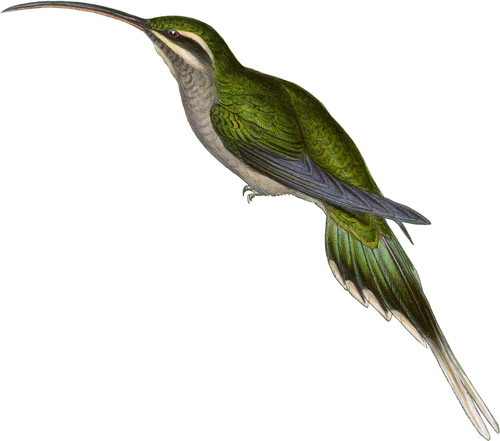 Phaëthornis superciliosus
Cayenne Hermit
Phaëthornis superciliosus
Cayenne Hermit
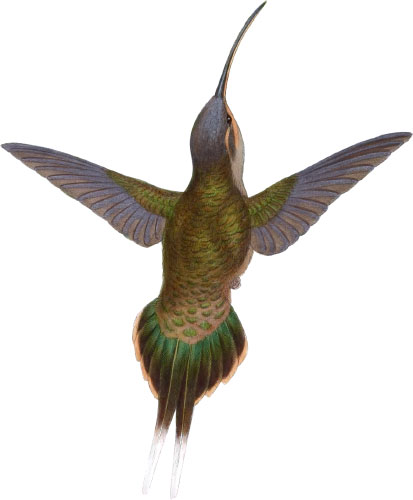 Phaëthornis fraterculus
Allied Hermit
Phaëthornis fraterculus
Allied Hermit
 Phaëthornis cephalus
Mexican Hermit
Phaëthornis cephalus
Mexican Hermit
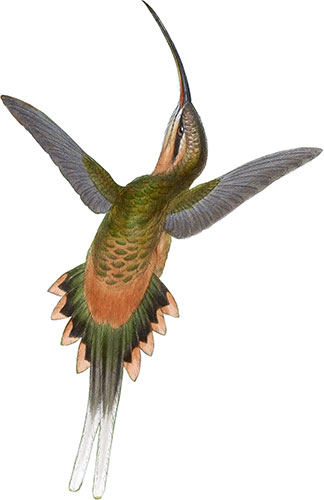 Phaëthornis syrmatophorus
Train-bearing Hermit
Phaëthornis syrmatophorus
Train-bearing Hermit
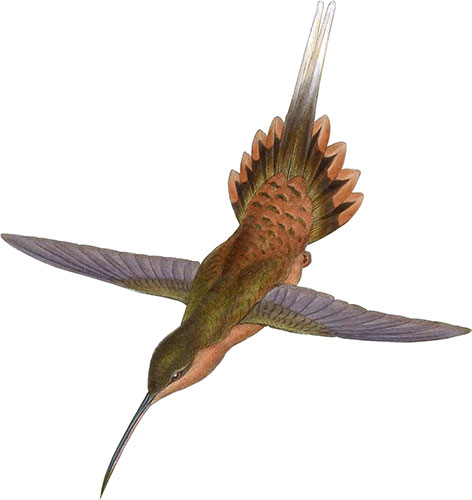 Phaëthornis Philippi
De Filippi’s Hermit
Phaëthornis Philippi
De Filippi’s Hermit
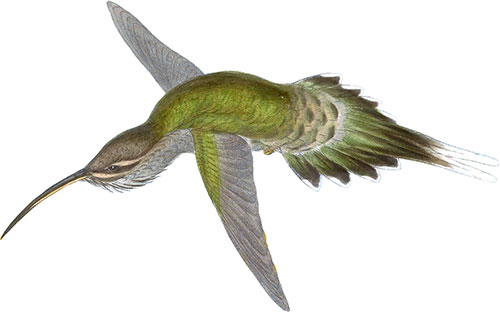 Phaëthornis hispidus
Hairy Hermit
Phaëthornis hispidus
Hairy Hermit
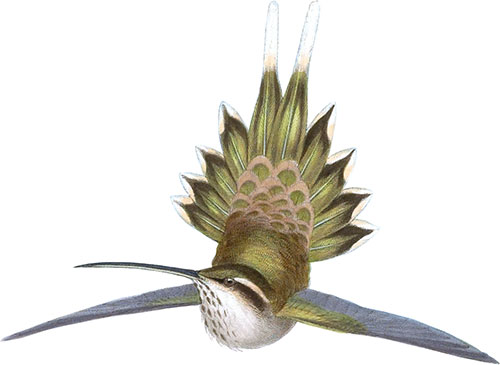 Phaëthornis anthophilus
Pallid Hermit
Phaëthornis anthophilus
Pallid Hermit
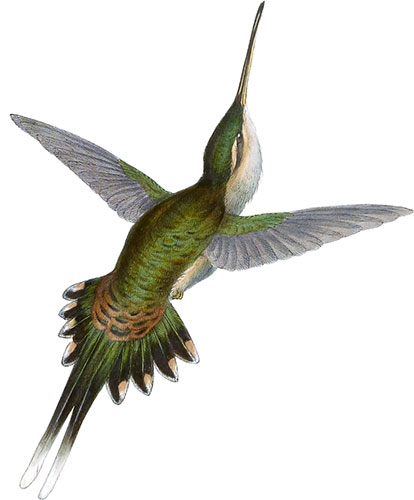 Phaëthornis Bourcieri
Bourcier’s Hermit
Phaëthornis Bourcieri
Bourcier’s Hermit
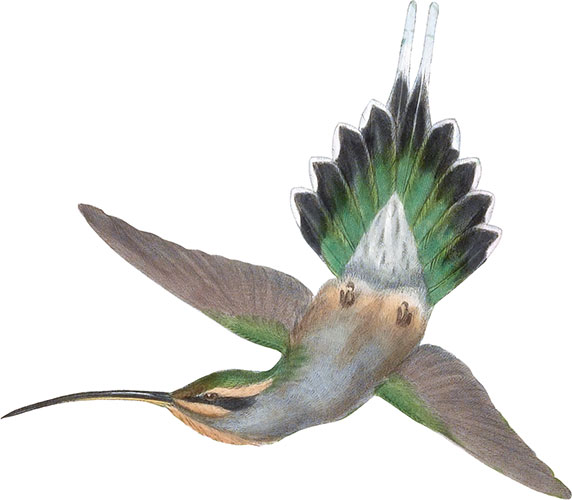 Phaëthornis Guy
Guy’s Hermit
Phaëthornis Guy
Guy’s Hermit
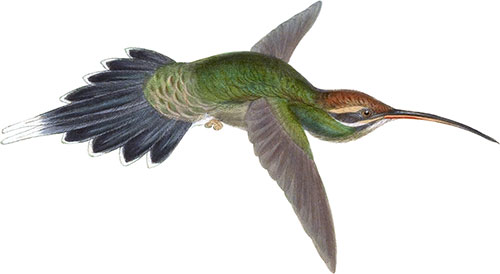 Phaëthornis Yarugui
Yaruquian Hermit
Phaëthornis Yarugui
Yaruquian Hermit
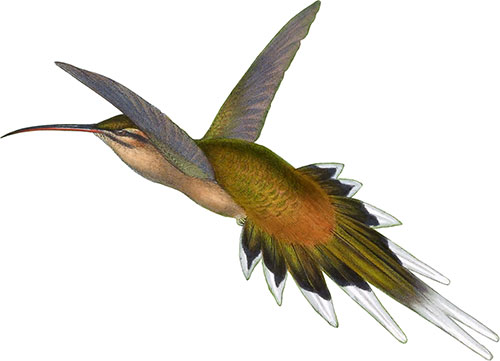 Phaëthornis Pretrei
Pretre’s Hermit
Phaëthornis Pretrei
Pretre’s Hermit
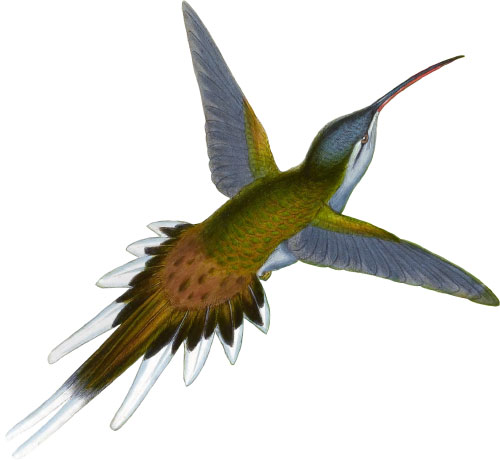 Phaëthornis Augusti
Sallé’s Hermit
Phaëthornis Augusti
Sallé’s Hermit
 Phaëthornis intermedius
Middle-sized Hermit
Phaëthornis intermedius
Middle-sized Hermit
Featuring all 422 illustrated species from John Gould’s A Monograph of the Trochilidæ, or Family of Humming-Birds arranged by color.